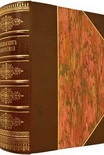Plunder Menachem Kaiser (english novels to improve english txt) 📖

- Author: Menachem Kaiser
Book online «Plunder Menachem Kaiser (english novels to improve english txt) 📖». Author Menachem Kaiser
Osówka, like the other Riese complexes open to the public, is best understood, I think, not as a museum or memorial (the underlying narrative is too murky; we don’t quite know what we’re looking at/preserving/memorializing) but as a ruin. It is something of a man-made wonder. It’s an unusually raw and unmediated glimpse of Nazi ambition and also the partial successes and ultimate failures of those ambitions. It’s Riese but it’s bigger than Riese. It’s world domination. It’s precisely engineered mass murder. It’s genocide. Look what the Nazis set out to do, my god. Look how far they got. Look how fast they got there. Riese inspires a kind of heavy-hearted awe. In that sense it’s demonic.
My sense is that the tourists come to Riese to be astonished. The treasure hunters come for their own complicated reasons but the tourists are not here to explore or mourn or celebrate; the victims are invisible and the enemy is long gone. No, the tourists are here to be astonished. What’s on display is the engineering.
Osówka had a gift shop, naturally, with Riese-themed key chains and shot glasses and books, including a couple of Joanna’s, and, featured prominently, Abraham Kajzer’s. So this is what Andrzej and Janek and Joanna had been talking about. Titled Za Drutami Śmierci, which Joanna translated as Behind the Wire of Death, it was a thin paperback, about 140 pages long, with a decidedly Holocaust-y cover, a blurry monochrome photo of a barbed wire fence. I bought it. Of course I bought it. Not to read, but as a souvenir. Show my family this other Kajzer, Abraham, so famous among Silesian treasure hunters.
That night, back in the apartment we’d rented in Wrocław, Jason and Maia crashed and I, bored but not yet sleepy, flipped through Za Drutami Śmierci. I couldn’t understand a word but still I tried to commune with it a little. On the first page there was a grainy black-and-white photograph of Abraham, dated 1962. Abraham is sitting outside, on a lawn chair, maybe a rocking chair, arms on the armrests, a relaxed and candid pose. He’s facing someone or something a few degrees to the left of the photographer. He’s half in the sun and half in the shadow. Abraham is lean, his face a little gaunt, weathered, with deep, distinguished laugh lines. He’s got a big leading-man nose, thick dark eyebrows that nearly meet, and a shock of white-black hair sticking straight up. He’s handsome, roguish even. He is wearing a wide-collared light-colored short-sleeve shirt, dark pants, no accessories save a wristwatch, and if you look long enough you’ll notice that he’s got only four fingers on his left hand.
This edition was published in 2013 by the Gross-Rosen Museum. (Gross-Rosen refers to both a sprawling network of concentration subcamps—among which were the ones the Riese laborers were interned in—as well as the main camp, which is where the museum is.) It included a preface, which even through the Polish I could see was heavy on biography, on names, dates, places. The first line was Abraham Kajzer urodil sie 15.02.1914 roku w Będzinie, which even I could understand: Abraham Kajzer was born on February 15, 1914, in Będzin. So Janek had been incorrect. Abraham Kajzer was born not in Łodź but in Będzin, which is the city adjacent to Sosnowiec. This changed the nature of the coincidence considerably.
With my phone I scanned the first couple of pages of the preface and ran the text through an online translator. The result was choppy, but comprehensible.
The preface, weirdly comprehensive, listed not only the names of Abraham’s parents—Fyvush and Udla—and the names of their seven children—Shprintza Gitel, Necha, Chaskiel, Abraham, Michael Rubin, Maier, and Fyvush Wolf—but everyone’s birthdates as well. Maier, Abraham’s younger brother, was born on March 6, 1921. My grandfather, also named Maier, was born on February 18, 1921. Which meant that, given Ashkenazi practices of legacy-naming, it was probable that both Maiers were named after the same person, a Maier who had died not long before. Less conclusive but still interesting evidence came a couple of paragraphs down: in 1932 Abraham Kajzer (then eighteen years old) and his wife, Chana, had a son, whom they named Moshe, not after my great-grandfather—who was still alive at the time; we name only after the dead—but perhaps after whoever my great-grandfather had been named after.
At this point it seemed very likely that Abraham Kajzer and I were in fact related—but how, exactly? Here I got lucky. I had data. I had spreadsheets.
The first thing The Killer had set out to do for the reclamation was establish who was who in my great-grandfather Moshe Kajzer’s family and who was who in his brother Shia Kajzer’s family. We needed to know who else, dead or alive, might have a claim on the property. This entailed a sweeping search of wartime, interwar, and pre–World War I records, stretching back to the 1880s, when Moshe and Shia were born. This was a daunting task. Polish municipal archives are no picnic. You have to pull from different eras, empires, jurisdictions, languages. There are Russian marriage records, Polish birth announcements, German ghetto censuses, etc. To that end, The Killer had consulted a man from Montreal who had compiled one of the most extensive and best-organized historical records of Polish Jewry. In a few weeks’ time he provided The Killer with six color-coded spreadsheets, more than thirty pages in total, listing any Sosnowiec or Będzin records in which a “Kajzer” or “Rechnic” (maiden name of Sura-Hena, Moshe’s wife) appears. These entries included birth records, marriage records, death records, and census data.
Up until now I hadn’t looked too closely at these spreadsheets; there hadn’t really been





Comments (0)